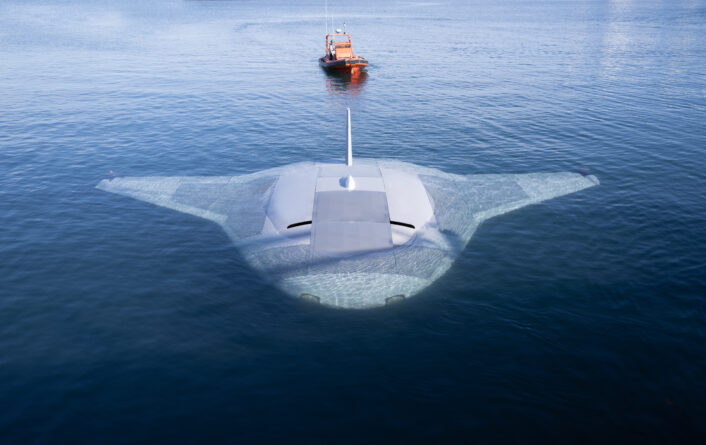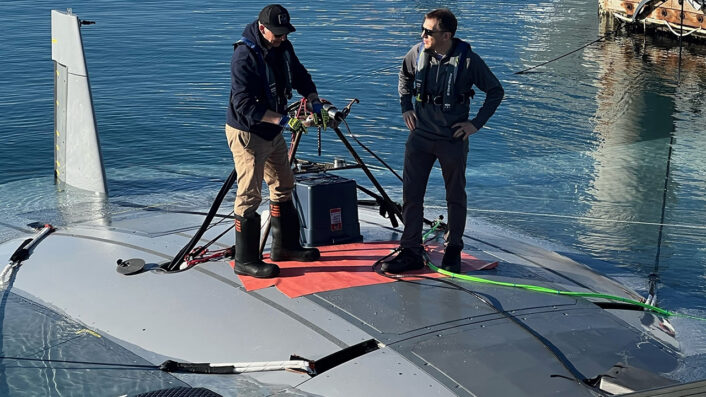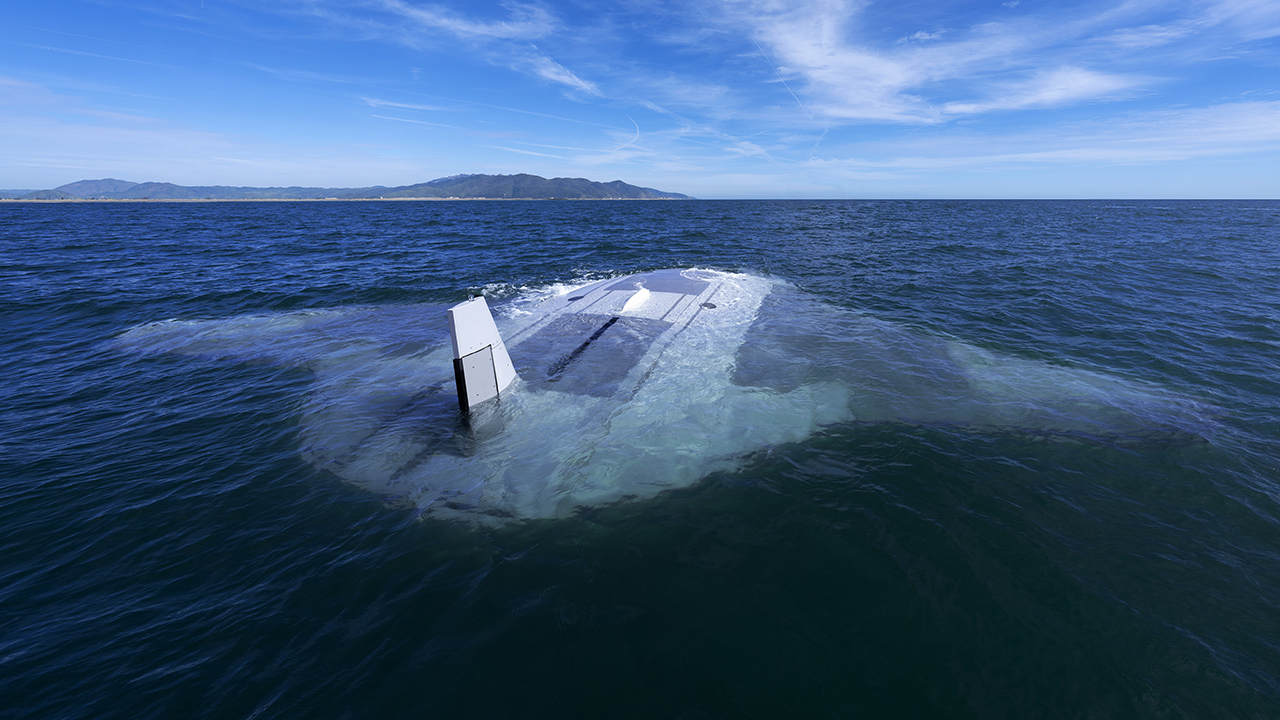We get a closer look a the Northrop Grumman Manta Ray UUV prototype during in-water testing off the coast of Southern California.
As we have already reported here, on April 8, 2024, Northrop Grumman Corporation unveiled the first image online of a full-scale prototype of the Manta Ray, an innovative uncrewed underwater vehicle (UUV). Described as a new class of UUV, the Manta Ray is an extra-large glider designed to undertake extended-duration, long-range, and payload-capable undersea missions independently, without requiring on-site human logistics.
The first image of the Manta Ray UUV strategically showcased the tail section of the vehicle in darkness to conceal certain intriguing details—similar to the approach taken by Northrop Grumman and the U.S. Air Force with the highly anticipated B-21 Raider bomber.
The Manta Ray prototype, recently underwent comprehensive full-scale testing off the coast of Southern California during February and March 2024. According to DARPA (Defense Advanced Research Projects Agency), this testing phase focused on evaluating the vehicle’s hydrodynamic performance in real-world conditions, including submerged operations utilizing all modes of propulsion and steering: buoyancy, propellers, and control surfaces.
DARPA released three new photos of the prototype during the testing campaign in the waters of the Pacific Ocean.

Dr. Kyle Woerner, the DARPA program manager for Manta Ray, emphasized the successful testing as a milestone in advancing the vehicle towards operational readiness. The vehicle’s modular design facilitated rapid assembly in the field, showcasing a unique capability for an extra-large UUV.
Northrop Grumman transported the Manta Ray prototype in modular subsections from its construction site in Maryland to the testing site in California. This approach not only demonstrated efficient shipping and assembly logistics but also highlighted the potential for rapid deployment globally without requiring extensive pier space at naval facilities.
“Directly shipping the vehicle to its operational area conserves energy that would otherwise be expended during transit,” explained Woerner. “Once deployed, the vehicle utilizes efficient, buoyancy-driven gliding to navigate through the water. It features multiple payload bays of varying sizes and types, enabling diverse naval mission capabilities.”

The Manta Ray program
The development of Manta Ray stems from a DARPA initiative focused on advancing critical technologies for future underwater unmanned vehicle (UUV) designs. This program targets advancements in energy management techniques, enhanced payload capacity, low-power propulsion systems, and other key areas aimed at improving UUV capabilities.
Northrop Grumman indicates that Manta Ray will feature advanced command, control, and communications (C3) capabilities, facilitating extended-duration operations with minimal human oversight. The data collected by Manta Ray will enhance decision-making for joint forces, providing a strategic advantage during missions.
In 2021, Northrop Grumman was awarded a Phase 2 contract to further the Manta Ray program initiated in 2020. Under Phase 2, the project involves the development of full-scale demonstration vehicles by two prime contractors: Northrop Grumman Systems Corporation and Martin Defense Group. Each contractor is tasked with creating unique vehicles to showcase specific capabilities within the Manta Ray program.













